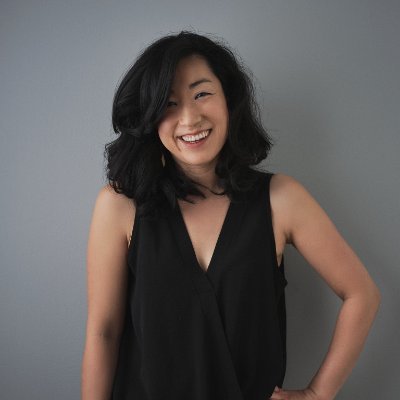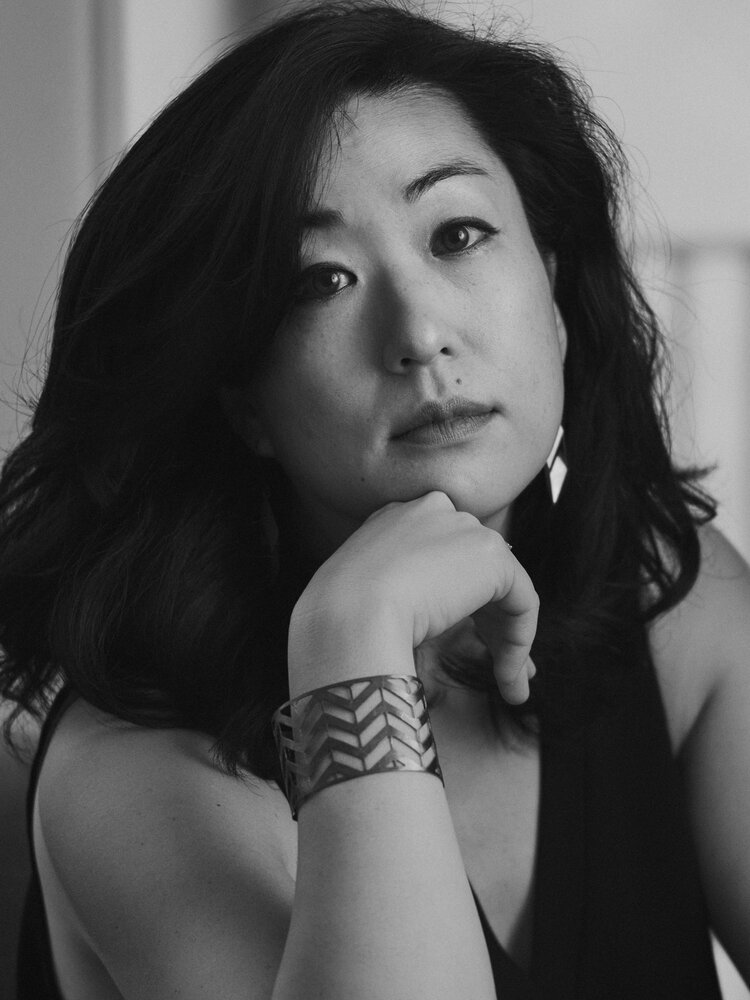“You’ve run away from your family, but that’s how all the stories begin.”
Folklorn, Angela Mi Young Hur

A story on intergenerational trauma, postmemory, and migration, Folklorn by Korean American Swedish writer Angela Mi Young Hur follows the curious trajectory of Elsa, an experimental physicist who studies neutrinos, as she questions the dichotomy between the real and the imaginary, symbols and numbers– and truth-telling and tale-spinning.
“My mother always spoke Korean to me,” Elsa opens her narrative, “but when telling her stories she didn’t sound like herself. No rich amber tones, weighted with regret-instead, her voice hollowed like a a will-o’-wisp untethered.”
The way Elsa begins her story is telling; it foresees the questions that she ceaselessly asks herself, as well as the answers she seeks throughout the novel. Intertwined questions on motherhood, family values, displacement, culture, and race drive the narrative, as Hur masterfully moves beyond the dividing line between past, present, and future.

Follow @AngelaMHur 
Release Date: April, 2021/Pre-order on angelahur.com
Having taken solace in the world of facts and numbers to protect herself from her seemingly dysfunctional family, Elsa, whose goal as an adolescent is simply “to get out,” goes to boarding school, then leaves the U.S. and finds herself first in Sweden working on her post-doc and eventually at the South Pole.
When Elsa begins the narrative, she is thirty, and as her friend Jesper tells her, “sometimes you’re like a Bergman film-but with more slapstick.” Part I offers insight into her anxieties, hopes, and regrets, as Elsa prepares to return to Sweden where she plans to extend her post-doc and continue her research. The South Pole is also where her imaginary friend, whom she hasn’t seen since her mother’s accident sixteen years ago, reappears. In the sections to follow, Part II and Part III, the intimate link between the mystery surrounding Elsa’s mother and her imaginary friend is uncovered. Although this is a painful process, Elsa handles it with humor and grace; Hur’s poetic language throughout the novel certainly helps too. Occasionally, time slows down to an extent that makes it a bit difficult to follow the narrative, especially in Part II. However, this is to be expected; in this novel, “time stretch[es] like taffy” and “words melt into inky puddles.”

Growing up in California, Elsa and her brother Chris suffer from social and parental alienation. Their childhood is loaded with adult responsibilities, as the two siblings struggle to navigate their relationship with an abusive father and a crestfallen mother, both traumatized by their own family issues in Korea, the lingering effects of the Korean War, and the inevitable loss of home. Theirs is an all-too-familiar story of displacement and survival. And to cope with discrimination, racism, sexism, and abuse from her husband, Elsa’s mother finds solace in Korean folktales and stories.
In her mother’s tales, young girls are sacrificed for prayers and Gods; nymphs are forced into marriages with Kings; sisters are betrayed by their step-mothers, and princesses are trapped in a liminal space between Heaven and Hell. “You and I,” her mother tells her, “we are descended from women whose lives have been degraded into common folktales. We live their lives, echoing their stories, but not their greatness–only their stupid tragedies because that is all we remember of them.”
In order to protect herself from, what her mother calls, the destiny of the women in her family “passed through the simplest direct bloodline,” Elsa replaces her mother’s grim tales with science textbooks:
[…] subject[ing] my Barbies to chemistry experiments, and w[inning] science competitions, beating out all the other Asians. Their parents were doctors and professors, but I was the true devotee because science was my survival. The language my mother couldn’t understand–how I disproved and refuted her.
[…]
I devoted myself to the read instead- numbers, formulae, facts- what Mom couldn’t understand but fearfully respected. That’s how I reached escape velocity, away from home into a life I’d determined for myself.
When her mother passes away, however, Elsa embarks on a mission to not only decode her mother’s secrets but also to decipher the true meaning of her fairy tales. She is thus compelled to return to California, confront the past, her imaginary friend, red ribbons, Deer Gods, legendary bells, as well as who she really is.

Folklorn is a contemporary origin story that seamlessly weaves Korean folklore within a narrative of identity, migration, and home.
Elsa believes that she always chooses science “for its reliable, stable certainties because the rules and empirical evidence diminished my mother and disenchanted her, got me further from home.” However, as the parallel between her research and personal struggles becomes explicit, so does the close link between the personal and the cosmic. We can see Elsa’s desire to challenge the perception of neutrinos and, albeit subconsciously at first, of identity as monolithic.
She elucidates her new angle in a research proposal on “sterile neutrinos” as follows:
Neutrinos are also shapeshifters, though in physics we call it oscillation. These “ghost particles” change identities along their lonely, infinite journeys–between electron, muon, or tau. However, we’ve never observed them in the process of transformation.We can only detect and deduce, observing them in one form here, another over there.
She tells her advisor elsewhere:
Even now, neutrinos don’t always abide by the same old rules of the Standard Model, but it’s like we keep forcing them to fit, even though the data shows these anomalies. […] By limiting the neutrino’s story, we’ve constrained our own cosmic existence. But if we can show a fourth state of being for the neutrino to morph into–that would upend everything! We’d have to build a new understanding of physics, a new understanding of the entire universe!
She goes on to explain that:
I always feel like a shapeshifter too-moving across America, across class, from Gardena to my blue-blood patrician schools, and now among the NordicTrackers. But it’s not code-switching–I don’t adapt in order to fit in or translate myself back and forth. I can’t peel off my Asian face anyway. But how else to explain why my skin feels false, ill-fitting or suffocating–depending on which borders and spaces I cross?
Although neutrinos change identities according to the Standard Model, Elsa’s focus shifts to what happens during the process of shape-shifting. She ruminates that the reason she became a physicist wasn’t the curiosity or “the willingness to believe in the unexpected,” but she realizes that something in her is changing; thinking like an artist, a story-teller, makes her a better scientist.
And we, as readers, are here to observe and relish the process of her transformation.
Folklorn is the first book I’ve read as part of my Reading Around Asia challenge (you can read more about my project here), and it was indeed the perfect book to launch my project. At the beginning, to Elsa her mother’s stories are simply cautionary tales– folktales that have been told and retold to create and perpetuate a singular national identity. She writes:
She [Elsa’s Mom] could’ve used a bullet point list: never go skinny-dipping in lakes, never trust pirates or monks, beware of sea turtles. Instead, she wrote them in many variations, in multiple variations. I finally realize how much she loved these stories for their story-ness.
Her mother’s renditions of these stories, Elsa realizes, are actually a way of moving beyond the monolith, a way of reclaiming her space, her Self.
As she writes in a letter to her brother at the end:
As you know, the character “soo” in our names is shared by our cousins in Korea and elsewhere, everyone in our generation. Dad and his siblings and cousins share a different character. For the following generation, another will be assigned. I thought this character sequence was determined by a bureaucratic office or clam secretary or some linguistic patter. Actually, it’s designated by a poem composed by family elders at the founding of a clan. In the sixty-two generations recorded in our book, we’ve completed an entire cycle–we’re the last breath of a poem composed almost two thousand years ago.
You’re right, there’s no reason to fear our inheritance. It’s not a curse that runs through our family, but a poem, which can be interpreted in multiple ways. Even a single word can mean different things. But you knew that already.
Elsa understands that where her mother felt forlorn and powerless, she wrote her power into being.
In a similar vein, the stories have and will continue to create space for not only Elsa, but “everyone in our family and generation” to reclaim their true selves in a world order that corroborates and perpetuates the binary oppositions. “We have full right to these stories of our ancestors,” As Elsa’s charming beau Oskar puts aptly, “even more so because we are of the diaspora. These tales -like us- have traveled far across time and space, to be remade and understood in a new light.”
Angela Mi Young Hur is a Korean American Swedish writer; her debut novel The Queens of K-town has been assigned in diaspora Korean literature classes at UC Berkeley, Stanford University, University of British Columbia (Canada) and University of Seoul (Korea).
Many thanks to Erewhon Books for an advance copy!
Moving on to Book 2 of Reading around Asia Project: Iran, The Stationery Shop by Marjan Kamali, 2019.


Thank you for this commentary/review. I know I will never read the book, but I really appreciate the fact that I know something about it through your writing. I have been to Korea twice as my daughter was an English teacher there for a couple of years, but I haven’t really come across any of its literature part from a couple of expat autobiographies before.
LikeLiked by 1 person
Thanks for reading, Basia! I’ve never been to East Asia, and my next big trip will be to Japan and Korea after things, hopefully, get back to normal. 🙂
LikeLike
id be interested in your impressions
LikeLiked by 1 person